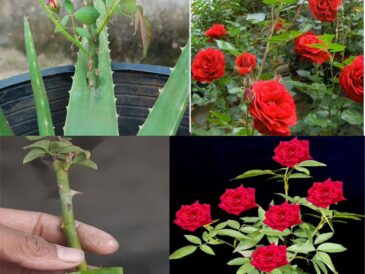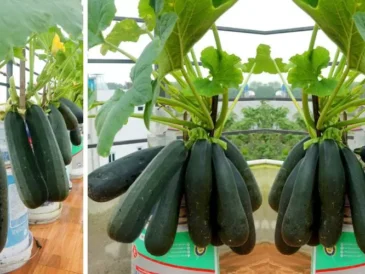Tangerines, those small, round citrus fruits bursting with flavor and nutritional benefits, are not only a delightful treat but also a rewarding crop to grow. Whether you have a sprawling garden or just a small balcony, you can cultivate these sweet fruits with the right knowledge and care. This guide will walk you through every aspect of growing tangerines, from selecting the right variety to harvesting your fruit, ensuring that your journey from soil to table is both fulfilling and fruitful.
Understanding Tangerines
The Tangerine Family
Tangerines (Citrus reticulata), part of the Rutaceae family, are a type of citrus fruit closely related to mandarins. They’re known for their vibrant orange skin, easy-to-peel qualities, and segmented, juicy flesh. Tangerines are typically sweeter and less acidic than other citrus varieties, making them an ideal snack or dessert ingredient. They also boast impressive health benefits, including high vitamin C content, antioxidants, and dietary fiber.
Varieties of Tangerines
Before you start planting, it’s essential to choose the right variety of tangerine suited to your climate and taste preferences. Here are a few popular types:
- Satsuma Tangerines: These are among the earliest ripening tangerines, known for their seedless nature and easy peeling. They thrive in cooler climates and are resistant to cold.
- Clementine: Often categorized as “cuties,” these are sweet, juicy, and segment easily. They have a glossy, thin skin and are often grown in greenhouses.
- Honey Tangerine: Known for their exceptionally sweet flavor, honey tangerines are a favorite among citrus lovers. They may have a few seeds, but that does not diminish their popularity.
- Mandarin Orange: Sometimes used interchangeably with tangerines, mandarin oranges include several tangy and sweet varieties, providing a broad choice for gardeners.
With a variety to select from, it’s important to ensure that your choice is suited for your specific growing conditions.
Choosing the Right Location
Climate Requirements
Tangerines flourish in subtropical and Mediterranean climates. They require:
- A warm environment with plenty of sunlight (at least 8 hours a day).
- Protection from frost, particularly during the blooming season.
- Well-draining soil, as tangerines do not thrive in waterlogged conditions.
Soil Preparation
Tangerines prefer slightly acidic to neutral soil, with a pH level between 5.5 to 6.5. Preparing your soil involves the following steps:
- Selecting a Site: Choose a location that receives full sun and is sheltered from strong winds.
- Testing Soil Quality: Conduct a soil test to determine its pH and nutrient content. Amend the soil based on test results to provide optimal growing conditions.
- Amending the Soil: Incorporating organic matter such as compost, peat, or well-rotted manure can help improve soil structure and fertility.
Space Requirements
Tangerine trees can grow up to 12-20 feet tall and 10-15 feet wide. For small gardens or balconies, consider dwarf varieties or container planting, which will restrict the growth without harming the tree.
Planting Tangerines
Preparing the Planting Hole
When you’re ready to plant, digging a proper hole is crucial:
- Dig a hole: Make it twice as wide and as deep as the root ball of the tree.
- Loosen the Soil: The sides of the hole should be loosened to aid root penetration.
- Planting: Place the tree in the center of the hole, ensuring the graft union (the swollen area where the scion meets the rootstock) is above soil level. This prevents rot and encourages healthy growth.
Watering After Planting
After planting, water the tree generously to help settle the soil around the roots. Creating a watering basin around the tree will help retain moisture, especially in the initial stages.
Caring for Your Tangerine Tree
Watering Regimen
Tangerines need consistent moisture but dislike soggy roots. Here’s a simple watering strategy:
- Frequency: Water deeply but less frequently — every 5-10 days, depending on weather conditions.
- Soil Check: Check the soil moisture; if it feels dry 1-2 inches below the surface, it’s time to water.
Fertilizing
Fertilizing is key to healthy growth:
- Type of Fertilizer: Use a balanced fertilizer formulated for citrus trees, often rich in nitrogen, phosphorus, and potassium.
- Application: Apply in early spring and late summer according to the package instructions. Avoid over-fertilizing as this can cause root burn.
- Organic Options: Incorporate compost or well-rotted manure annually to provide nutrients and improve soil structure.
Pruning for Strong Growth
Regular pruning helps maintain a healthy tree structure and promotes better fruit production by allowing sunlight to penetrate the inner branches.
- When to Prune: Late winter or early spring before new growth begins is ideal.
- How to Prune: Remove any dead, diseased, or crossing branches. Aim for an open center to allow airflow.
Pest and Disease Management
Keep an eye out for common pests such as aphids, spider mites, and scale. Using insecticidal soap or neem oil can help manage infestations. Diseases like root rot can often be prevented with good drainage.
Pollination and Fruit Setting
Tangerines are typically self-pollinating, meaning that a single tree can produce fruit without other trees nearby. However, having neighboring citrus trees can enhance the production and quality of fruit.
Blooming Period
Tangerine trees generally bloom in late winter to early spring. Bees and other pollinators are essential during this time. Consider planting flowers nearby to attract them.
Fruit Development
After pollination, fruit begins to develop, and you may notice the formation of tiny green fruits. Depending on the variety, it may take anywhere from 6 to 12 months for fruits to reach maturity.
Harvesting Tangerines
Knowing When to Harvest
Tangerines are generally ready for harvest when they turn vibrant orange. This is an excellent time to test a few fruits for sweetness. Slightly soft skin and easy detachment from the stem also signal ripeness.
Harvesting Technique
Using scissors to cut the fruit from the tree minimizes damage, ensuring that you don’t injure the tree or unripe fruit nearby.
Enjoying Your Tangerine Harvest
Once harvested, tangerines can last for about a week at room temperature or up to two weeks in the refrigerator. They are perfect for snacking, juicing, or even using in various culinary dishes. From salads to desserts, the sweet and tangy flavor of tangerines adds brightness to any recipe.
Conclusion
Growing tangerines can be a fulfilling endeavor, allowing you to enjoy sweet and healthy fruits fresh from your garden. With careful selection of the right variety, attention to suitable growing conditions, proper care, and a bit of patience, you’ll likely be rewarded with a bountiful harvest. So embrace the journey — your tangy, sun-kissed tangerines await!




